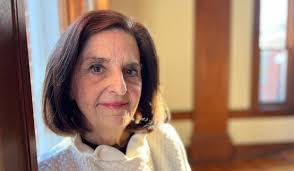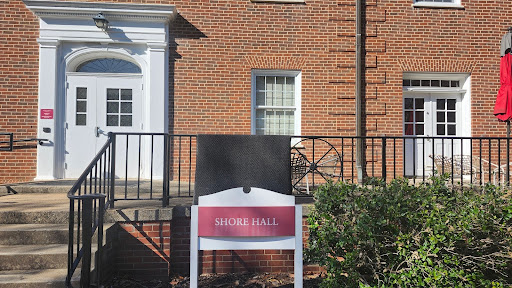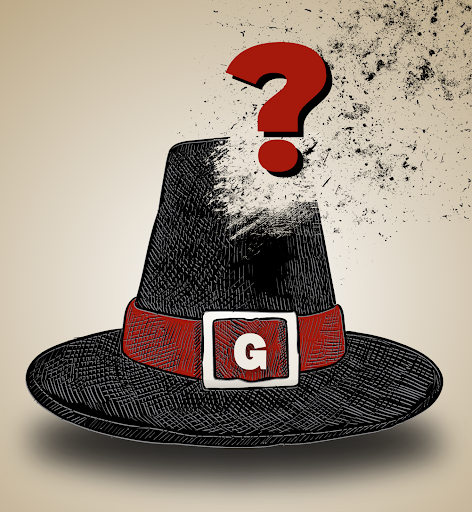A path of arrows begins outside of King Hall. The arrows lead inside, where they then evolve into a timeline, where each arrow represents a significant event in Guilford’s history.
Starting from its founding in 1837, the timeline progresses to Guilford’s history of integration. The final arrow leads to two rooms filled with the story of Guilford’s integration as told by its first black students.
On March 29, the Multicultural Education Department presented the Early Black Alumni Art and History Exhibit. As part of the yearlong commemoration of the 50th anniversary of integration at Guilford, called “Journeys into Blackness,” the exhibit shared the stories of Guilford’s first black students through video and written interviews, archival newspaper articles, as well as portraits and photographs.
The exhibit emphasized the fact that an understanding of its history as an integrated institution is crucial to Guilford. Many students do not realize that Guilford first integrated in 1962.
“I was surprised (by) how late Guilford integrated,” said junior Anney Bolgiano. “It’s so important to understand the history of the school you go to. I’m glad I came.”
“It’s important for an institution to remember its history,” said Jorge Zeballos, Interim Director for Diversity Training. “This is our way of looking back at our history.”
At this exhibit, the history did more than just hang on the wall. Some of Guilford’s first black students attended the event to offer perspectives on their early Guilford experiences.
Meri-Li Douglas is one of those first students. While at Guilford, she founded the Brothers and Sisters in Blackness, the first group at Guilford that promoted unity and pride among black students at Guilford.
“(The exhibit) was amazing and professionally done,” said Douglas. “It made me try to remember after blocking it out.”
The event’s organizers hope current students take some lessons away from the alumni’s experiences.
“I hope people gain courage and hope as they look into the eyes of the early black alumni,” said Africana Community Coordinator Jada Drew. “It wasn’t easy back then.”
The presentation of history through art was a crucial aspect to the exhibit.
“This is something different,” said Drew. “It’s bigger than just interviews.”
“Art is a great way to deal with tough community issues,” said Judy Harvey, Engaged Learning and Teaching Specialist for the Center for Principled Problem Solving.
While those community issues were brought up, the ultimate goal of the event was to celebrate the trail-blazing students.
“This was to honor early African-American students,” said Harvey.
Organizers like Drew and Harvey hope that the “Journeys into Blackness” series will further understanding and increase awareness of racial issues facing Guilford.
“I hope people understand it wasn’t an issue of whites versus blacks,” said Drew. “This is a collective history of people working together.”
The exhibit is currently in the process of gaining a more permanent place on Guilford’s campus.
[photomosaic nggid=112]











